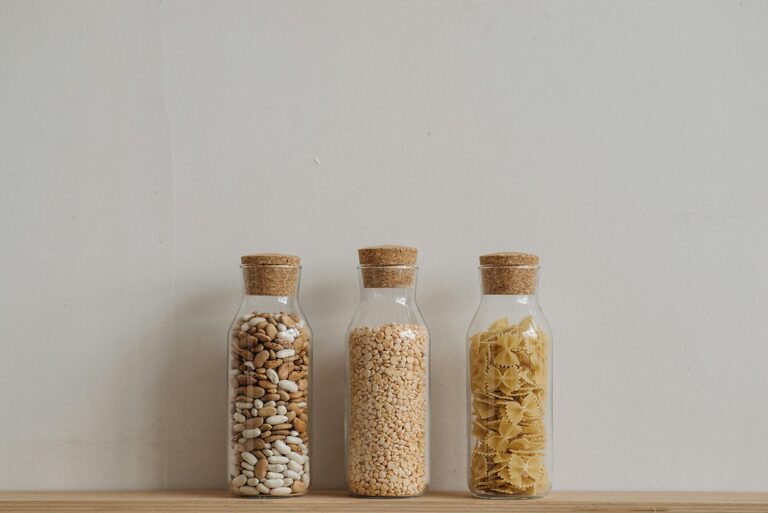Keeping your fridge and pantry tidy not only makes meal prep easier but also helps reduce food waste and ensures a healthier kitchen environment. A clean, organized space allows you to quickly find what you need and keeps your food fresh longer. In this post, we’ll explore practical and easy strategies to maintain an orderly fridge and pantry.
Why Is It Important to Keep Your Fridge and Pantry Organized?
An organized fridge and pantry:
– Helps prevent food spoilage by giving you a clear view of what you have
– Saves money by reducing unnecessary purchases
– Makes cooking and meal preparation faster and more enjoyable
– Ensures proper food safety by reducing cross-contamination risks
With these benefits in mind, let’s dive into actionable steps you can take to maintain that order.
Preparing for Your Organization Session
Before diving in, gather a few supplies:
– Cleaning cloths or paper towels
– Mild detergent or natural cleaners like vinegar
– Storage containers or bins (optional but helpful)
– Labels or markers for identifying contents and dates
– A trash bag for expired or spoiled items
Set aside about an hour or two, depending on the size of your fridge and pantry.
How to Organize and Clean Your Fridge
1. Empty the Fridge Completely
Start by removing all the items. This will allow you to clean shelves and drawers thoroughly. Check expiration dates and toss anything that is expired, spoiled, or unrecognizable.
2. Clean All Surfaces
Use a mild cleaning solution (a mix of water and vinegar works well) to wipe down shelves, walls, drawers, and door compartments. Make sure everything is dry before placing items back.
3. Categorize Your Items
Group foods into categories such as:
– Dairy and eggs
– Meats and seafood
– Fruits
– Vegetables
– Condiments and sauces
– Leftovers
Storing items in groups helps you locate them easily and maintain order.
4. Use Clear Storage Containers
Using clear containers or bins keeps similar items together and prevents spills. For example, put all salad dressings in one bin and dairy products in another. This also keeps items from toppling over.
5. Follow Proper Food Storage Guidelines
Place foods in the right areas. For example:
– Store raw meat in the bottom drawer or shelf to prevent drips on other food.
– Keep dairy products in the coldest part of the fridge.
– Fruits and vegetables often have separate drawers designed to maintain optimal humidity.
This helps keep food fresh longer and reduces the risk of contamination.
6. Label and Date Leftovers
Use reusable labels or masking tape and a marker to label leftovers with the date they were prepared. This reminder helps you eat them before they spoil.
7. Leave Some Room for Air Circulation
Don’t overpack your fridge. Proper airflow helps maintain consistent temperatures and keeps food fresh.
How to Organize and Clean Your Pantry
1. Empty and Clean
As with the fridge, remove all items from your pantry. Wipe down shelves with a damp cloth and mild cleaner.
2. Dispose of Expired or Unused Items
Check expiration dates and get rid of stale or expired food. Also donate unopened, non-expired items you don’t use.
3. Group Similar Items Together
Organize items by type, such as:
– Baking supplies
– Canned goods
– Grains and pasta
– Snacks
– Spices and seasonings
– Cooking oils and vinegars
4. Use Clear, Airtight Containers
Transfer bulk items such as flour, sugar, rice, or cereal into airtight containers. This keeps them fresh longer and prevents pests.
5. Label Everything
Labels make it easy to find and return items to their place quickly. You can print labels or write on masking tape.
6. Use Bins and Risers for Space Efficiency
Stackable bins or shelf risers maximize vertical space and keep things visible and reachable.
7. Arrange Items by Expiration Date and Use Frequency
Place frequently used items at eye level or front of shelves. Keep older products toward the front so you use them before newer products.
Maintaining Your Organized Fridge and Pantry
– Weekly quick checks: Spend 5–10 minutes scanning for expired items or spills.
– Wipe spills immediately: Cleaning small messes right away prevents bigger problems.
– Plan meals: Use your inventory to plan meals and grocery lists, reducing food waste.
– Regular deep cleans: Aim for a thorough clean and reorganization every 1–3 months.
Bonus Tips for a Tidy Kitchen Storage
– Keep a notepad or whiteboard on your fridge or pantry door to jot down items you need to buy.
– Freeze portions of perishable foods you can’t finish quickly.
– Use stackable containers in your fridge to save space and increase visibility.
– Avoid overcrowding shelves to maintain airflow and easy access.
Conclusion
A tidy fridge and pantry create a positive cooking experience, save money, and promote food safety. By regularly cleaning, organizing your items thoughtfully, and staying on top of expiration dates, you’ll enjoy a clutter-free kitchen that works for you. Start small, keep it consistent, and watch your kitchen storage transform into a neat, functional space.
Happy organizing!

